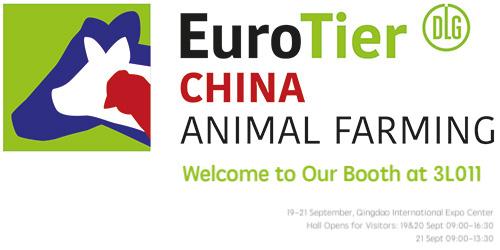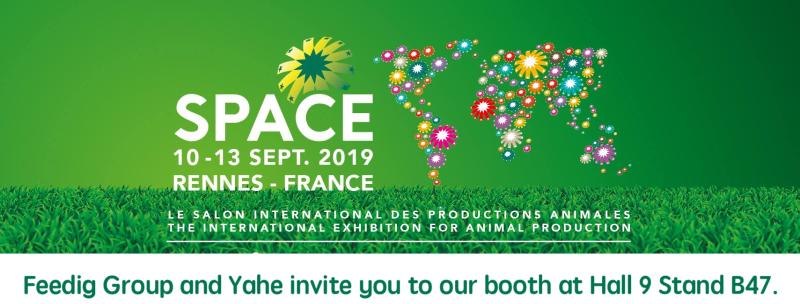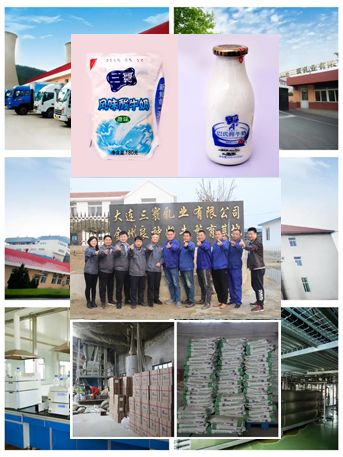1. Low market price
In 2018, the lysine market was operating in the low range. The lowest point of 98-content lysine was 7.2 yuan / kg, the highest point was 8.8 yuan / kg, and the low point of 70-content lysine was 4.2 yuan / kg. The high point was 5.5 yuan / kg. In May-July 2018, the market price of lysine bottomed out. In August-November, manufacturers gradually raised prices due to the rise of corn, and the lysine market rebounded. With the increase in corn volume, price decline and the release of new lysine production capacity, the lysine market has weakened again since late November, and prices have been corrected
Second, continuous expansion of production capacity
In 2018, the global production capacity of lysine for feeding was 4.815 million tons, the domestic production capacity of lysine manufacturers was 3.31 million tons, a year-on-year increase of 54%, the expanded production capacity exceeded 1 million tons, and the total global production capacity accounted for 70%. A year-on-year increase of 10%. Under the surplus of production capacity, the overall equipment utilization rate of China's lysine producers remained at around 50% in 2018. After the expansion, the proportion of domestic manufacturers' production capacity changed in 2018. Among them, Yipin ranked first with 21% of the production capacity, followed by Meihua, with a production capacity of up to 20%, and Dacheng's production capacity fell to third.
Looking at the provinces, the production capacity of lysine in Heilongjiang Province has increased significantly, and the increase in production capacity in Shandong Province is also more obvious. More than one million tons of expanded production capacity will be gradually released in the fourth quarter of 2018, such as Fengyuan 150,000 tons production capacity, Dongxiao 120,000 tons production capacity, Fufeng 100,000 tons production capacity, in addition to gold corn 200,000 tons, Yipin 300,000 tons , Meihua's 400,000 tons of expanded production capacity is planned to be commissioned at the end of the fourth quarter of 2018 or early 2019. Dacheng plans to relocate its 100,000-ton lysine production facility to the Xinglongshan plant from March 2019 to February 2020.
3. Exports keep growing
With the increase of domestic lysine production capacity, China ’s lysine export volume has surpassed its import volume since 2005, and its lysine hydrochloride export volume has surpassed lysine sulfate since 2010, accounting for more than half, becoming the global lysine The main producing area of the acid market. In 2015, Dacheng ’s export volume due to suspension of production dropped sharply to 29,000 tons, and the annual export volume growth was limited. In 2016 and 2017, China ’s lysine export volume returned to a high growth rate. In the past two years, domestic Russian lysine companies have risen. Starting from October 20th, the Russian Federation Veterinary and Phytosanitary Supervision Office decided to prohibit the import of lysine from 6 Chinese lysine factories including Plum (Tongliao, Xinjiang, Langfang), Yipin (Ningxia, Inner Mongolia) and Golden Corn. The reason is that the factory inspection problem has not been agreed.
In 2018, China's exports of lysine products to Russia were very few, from the previous five or sixty thousand tons of exports to four or five hundred tons this year. In 2018, the country with the largest export volume to Russia was changed from Russia to the Netherlands. Affected by global feed growth, low production costs of domestic enterprises, as well as domestic export tax rebate rate hikes and the Belt and Road Initiative, China's export of lysine products continued to grow in 2018, and it is expected that China's lysine (98% content) will be exported in 2018 The total amount is about 590,000 tons, of which domestic lysine tax number 29224190 lysine salt and ester exports are about 400,000 tons.
Fourth, low protein diet standards
In 2018, the Sino-US trade war was fierce. In July, the United States formally imposed punitive tariffs on Chinese products exported to the United States. As a counterattack, China imposed a 25% tariff on US soybean and other agricultural products. Dependence on domestic environmental protection pressure. In this context, on October 23, 2018, the China Feed Industry Association issued two group standards of "complex feed for piglets, growing and fattening pigs" and "composite feed for laying hens and broilers", which will be implemented from November 1, 2018.
In general, the lower limit of the proportion of crude protein in feed was lowered, and the upper limit was added, but there was no upper limit. According to calculations by the Ministry of Agriculture and Rural Affairs, the average protein level of pig compound feed was reduced by 1.5 percentage points; the protein of compound feed for laying hens and broilers decreased by about 1 percentage point. If the new standard is fully implemented in the whole industry, the annual consumption of soybean meal in the aquaculture industry is expected to be reduced by about 11 million tons, which will help promote the growth of amino acid consumption. However, in early December, China and the United States agreed to a ceasefire in the fierce trade war, and said that they will not increase tariffs from January 1, 2019. China restarts US soybean procurement, and soybean meal prices have fallen sharply. There are still uncertainties in the results of the sex negotiations, and follow-up needs to continue to focus on the trend of the Sino-US trade war and the progress of the implementation of the new standards.
V. Corn price rise
Under the influence of factors such as the reduction of planting area, the decline of imported substitutes, the double increase in the export volume and capacity of corn deep processing products, and the massive expansion of biofuel ethanol projects, China's corn demand increased in 2018, and the effect of destocking was significant. The volume exceeded 100 million tons, an increase of 43.09 million tons year-on-year. The domestic corn supply and demand relationship has turned from surplus to tight, and prices have fluctuated upward. Since August, corn prices have risen, and the lysine market has risen due to cost. New in December 2018 Corn is gradually increasing in quantity, prices are gradually falling, and the lysine market is weakening.
VI. Deep processing subsidy reduction
Compared with last year ’s subsidy of 300 yuan per ton in Heilongjiang Province and 200 yuan per ton in Jilin Province, this year Heilongjiang and Jilin reduced the subsidy for processing new corn by corn deep processing enterprises and feed enterprises by half, and the subsidy period was also five months from last year. It has shrunk to one and a half months this year. Lysine prices are low, costs are rising, and government subsidies are declining, compressing lysine corporate profits.
In 2018, Heilongjiang Province actually purchased and consumed corn newly produced in the province for corn deep-processing enterprises with an annual processing capacity of more than 100,000 tons and compound feed enterprises with an output of 50,000 tons, and was granted a subsidy of 150 yuan per ton. The subsidy period is from March 23 to April 30, 2018. It will be acquired and stored, and will be processed before June 30.
In 2018, Jilin Province actually purchased and consumed corn newly produced in the province for corn deep-processing enterprises and compound feed enterprises with an annual processing capacity of more than 100,000 tons, and granted a subsidy of 100 yuan per ton. The subsidy period is from March 15th, 2018 to April 30th, 2018. It will be acquired and stored, and the processing will be completed before June 30th, 2018.
Seven. Export tax rebate rate increase
On September 5, 2018, the Ministry of Finance and the State Administration of Taxation issued a notice on raising the export tax rebate rate for electromechanical, cultural and other products, which will be implemented on September 15th. Increased to 13%. After the export tax rebate rate is raised, enterprises can get more tax rebates for export, and promote the export of lysine enterprises.
8. Swine fever epidemic
In early August 2018, after the diagnosis of the first African swine fever epidemic in China in Shenyang, Liaoning Province, the outbreak has continued to date and has involved 23 provinces and cities. As of the end of December, there have been 98 outbreaks of African swine fever in China, about 630,000 Infected pigs were culled, inter-provincial transportation was suspended in 11 neighboring provinces, and the volume of pig transportation was greatly reduced, resulting in a slow sale of pigs in the production area, an increase in the elimination of sows, lighter piglet supplements, and a decline in production and sales of pig feed reaction. Lysine is the first restrictive amino acid in pig feed, and lysine is closely related to the demand for pig feed production. The amount of lysine in pig feed is relatively large. The swine fever epidemic has caused the domestic demand for lysine in the fourth quarter of 2018. decline.





